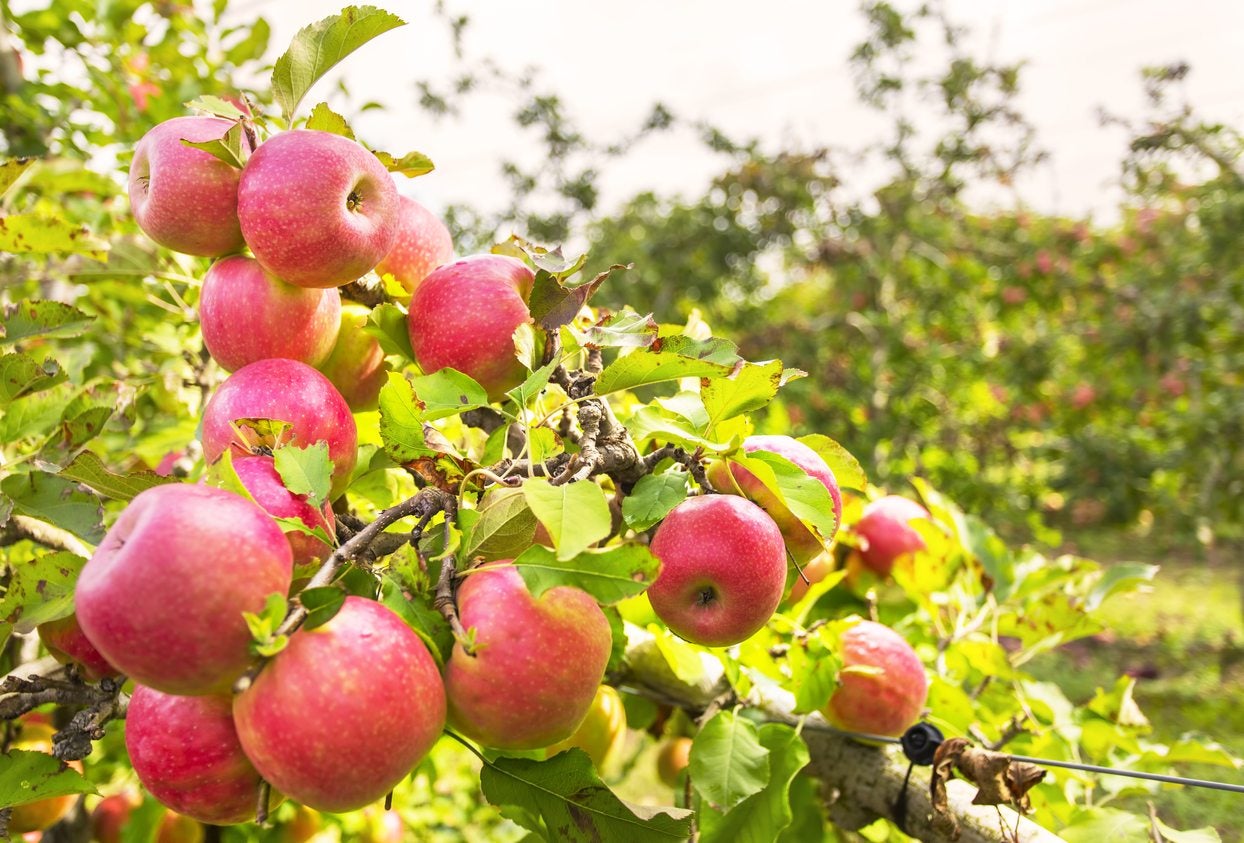Zone 5 Apple Trees – Growing Apples In Zone 5 Gardens


Even though George Washington chopped down a cherry tree, it’s apple pie that became the American icon. The best way to make one is with fresh, ripe, delicious fruit from your own garden orchard. You may think that your zone 5 region is a little chilly for fruit trees but finding apple trees for zone 5 is a snap. Read on for tips about great apple trees that grow in zone 5.
Growing Apples in Zone 5
If you live in USDA zone 5, winter temperatures dip below zero most winters. However, you’ll find lots of apple trees growing in this zone, a region that includes the Great Lakes and the northwestern interior of the nation.
In fact, many of the classic apple varieties thrive in USDA zones 5 to 9. From a list of those varieties, you should choose apple trees for zone 5 based on other important tree features. These include fruit characteristics, bloom time, and pollen compatibility.
You’ll also want to think about chill hours. Each apple variety has a different number of chill hours – number of days the temperatures are between 32 and 45 degrees F. (0-7 C.). Check the tags on the seedlings to figure out the chill hour information.
Zone 5 Apple Trees
Classic apple varieties like Honeycrisp and Pink Lady are among those apple trees that grow in zone 5. Honeycrisp is known for producing delicious fruit in USDA zones 3 to 8, while Pink Lady, crisp and sweet, is everybody’s favorite in zones 5 to 9.
Two other, lesser-known varieties that do well as zone 5 apple trees are Akane and Ashmead’s Kernel. Akane apples are small but snap with flavor in USDA zones 5 to 9. Ashmead’s Kernel is definitely one of the best apple trees for zone 5. However, if you are looking for gorgeous fruit, look elsewhere, as this tree produces apples as ugly as you’ve ever seen. The flavor is superior, however, whether eaten off the tree or baked.
If you need a few more variety suggestions for growing apples in zone 5, you can try:
Gardening tips, videos, info and more delivered right to your inbox!
Sign up for the Gardening Know How newsletter today and receive a free copy of our e-book "How to Grow Delicious Tomatoes".
When you are selecting apple trees for zone 5, consider pollination. The majority of apple varieties are not self-pollinating, and they don’t pollinate any blossoms of the same apple variety. This means that you’ll probably need at least two different varieties of zone 5 apple trees. Plant them reasonably close to each other to encourage bees to pollinate. Plant them in sites that get full sun and offer well-draining soil.

Teo Spengler is a master gardener and a docent at the San Francisco Botanical Garden, where she hosts public tours. She has studied horticulture and written about nature, trees, plants, and gardening for more than two decades. Her extended family includes some 30 houseplants and hundreds of outdoor plants, including 250 trees, which are her main passion. Spengler currently splits her life between San Francisco and the French Basque Country, though she was raised in Alaska, giving her experience of gardening in a range of climates.